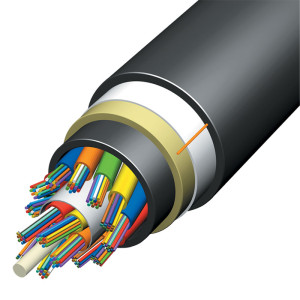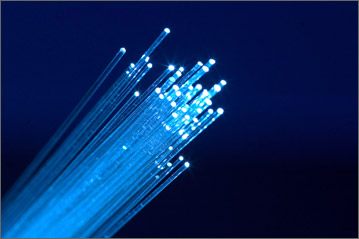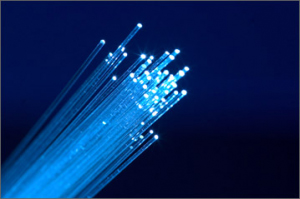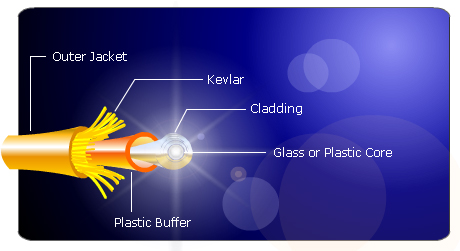
 Sophisticated technology has made it possible for the new generation of entrepreneurs to enjoy Cat5, Cat6, and fiber optic cabling. These technologies amplify speed, enhance performance and reduce costs.
Sophisticated technology has made it possible for the new generation of entrepreneurs to enjoy Cat5, Cat6, and fiber optic cabling. These technologies amplify speed, enhance performance and reduce costs.
Cat5
Cat5 refers to structured cabling for transmission of data signals. This is used primarily for computer networks. Standard performance is a maximum of 100 MHz and fits into the Gigabit and Fast Ethernet.
Cat5 carries other signals for video and telephony. Almost all Cat5 cables are unprotected and depend on balanced lines and twisted pair designs as well as differential signals to reject noise.
Cat6
Cat6 is considered standard for Gigabit Ethernet along with network protocols that require more speed than
Cat5 cables. Cat6 is made up of four pairs of wires comparable to Cat5. Using all four pairs allows this model to support communications that are double the speed of Cat5. This translates to speeds of one gigabit/second.
Fiber Optic Cabling
Fiber optic cabling or optical fiber is distinct from Cat5 and Cat6. It utilizes light rather than electricity to transmit signals. It has a better signal compared to the traditional
copper cables, so it sends signals more rapidly than is possible with copper cable. Optical fiber is also impervious to interference from electricity, which means that users can use it anywhere and anytime. Fiber optic cabling also allows for much longer transmission distances. Cat5 and Cat6 are limited to only 100m of cable from wallplate to computer.
Even telephone companies have started to phase out copper wires in favor of fiber optic cables. Technical experts of these firms are working to reduce the vulnerability of
fiber optic cables to water. Using fiber optic provides enterprises the adaptability of augmenting bandwidth in just several days compared to the conventional copper circuits, which usually take a maximum of one month to upgrade. Fiber optic connections generally start at two megabytes, with dedicated upload and download speeds of up to one gigabyte.
Fiber Connection
The fiber connection will also facilitate the business-mode Service Level Agreement or SLA. This implies that business entities obtain a secured 99.99 percent uptime. If power failure and other issues occur, technical specialists can conduct repairs within a maximum period of four hours. Your business reaps the benefits of speed, assured uptime and fast
service by a reputable company like Progressive Office Cabling. It makes use of high-quality cables along with connectivity parts as well as the most efficient systems in cable management. The company’s technicians have been trained properly to be able to respond to your demands. With a proven project management approach, effective communication is guaranteed during the entire project.
This kind of service is practically unmatched in this industry. Savvy users and business proprietors will know how to choose the service provider that can deliver solutions based on their requirements.

 Optical fiber cabling is made up of a fiber core and a protective layer. The shield is typically coated with a polymer. It protects the cable from damage and does not contribute to optical wave guide properties. The coated fiber is a durable synthetic resin serving as a support for the cable’s core. Protective jacket layers are added depending on the cabling application.
Optical fiber cabling is made up of a fiber core and a protective layer. The shield is typically coated with a polymer. It protects the cable from damage and does not contribute to optical wave guide properties. The coated fiber is a durable synthetic resin serving as a support for the cable’s core. Protective jacket layers are added depending on the cabling application.

 networking has evolved a great deal. It is now mandatory for companies to invest in structured cabling systems that can support a complex operation. That is why many corporations have shifted to fiber optic communications from the traditional copper cabling systems. However, it is important to plan the infrastructure carefully and anticipate some problems that may come along the way.
networking has evolved a great deal. It is now mandatory for companies to invest in structured cabling systems that can support a complex operation. That is why many corporations have shifted to fiber optic communications from the traditional copper cabling systems. However, it is important to plan the infrastructure carefully and anticipate some problems that may come along the way.


 An efficient
An efficient 


 communications, because light propagates through the fiber with little attenuation compared to electrical cables. This allows long distances to be spanned with few or no repeaters. Additionally, the per-channel light signals propagating in the fiber can be easily modulated at 1 Gb/s.
communications, because light propagates through the fiber with little attenuation compared to electrical cables. This allows long distances to be spanned with few or no repeaters. Additionally, the per-channel light signals propagating in the fiber can be easily modulated at 1 Gb/s. rt distances, up to 550 m (600 yards), and single-mode fiber used for longer distance links. Because of the tighter tolerances required to couple light into and between single-mode fibers (core diameter about 10 micrometers), single-mode transmitters, receivers, amplifiers and other components are generally more expensive than multi-mode components.
rt distances, up to 550 m (600 yards), and single-mode fiber used for longer distance links. Because of the tighter tolerances required to couple light into and between single-mode fibers (core diameter about 10 micrometers), single-mode transmitters, receivers, amplifiers and other components are generally more expensive than multi-mode components.